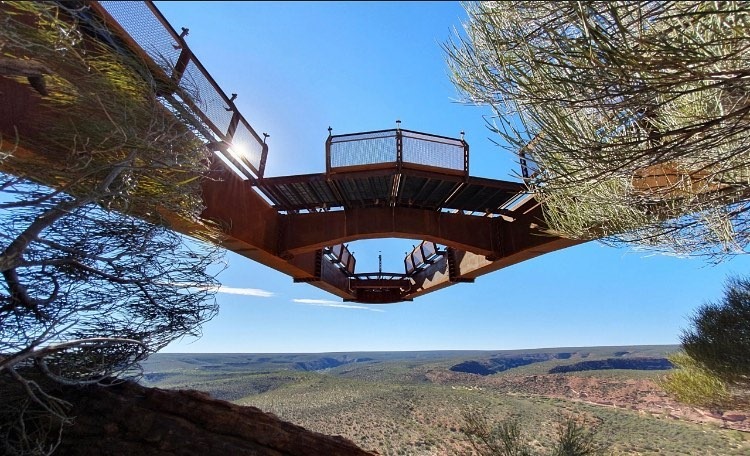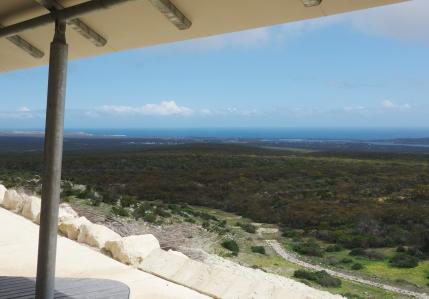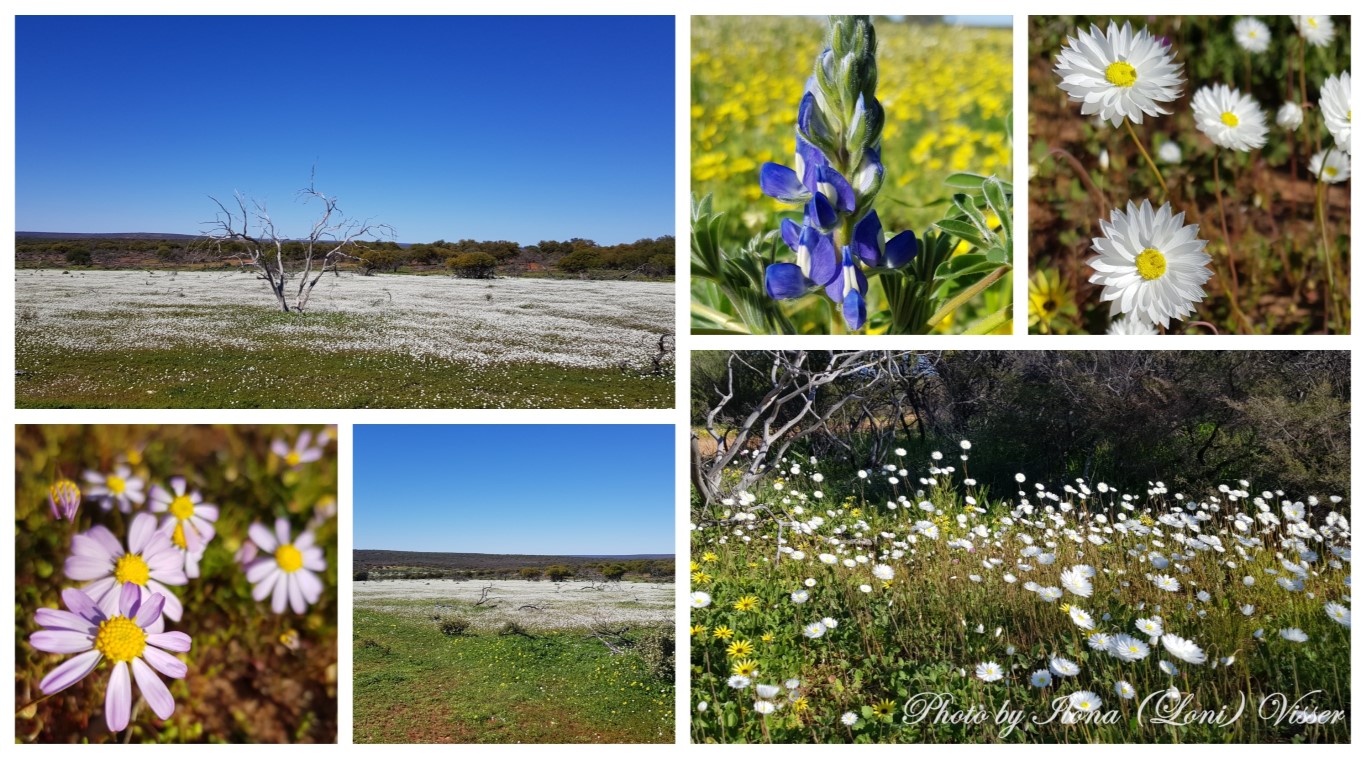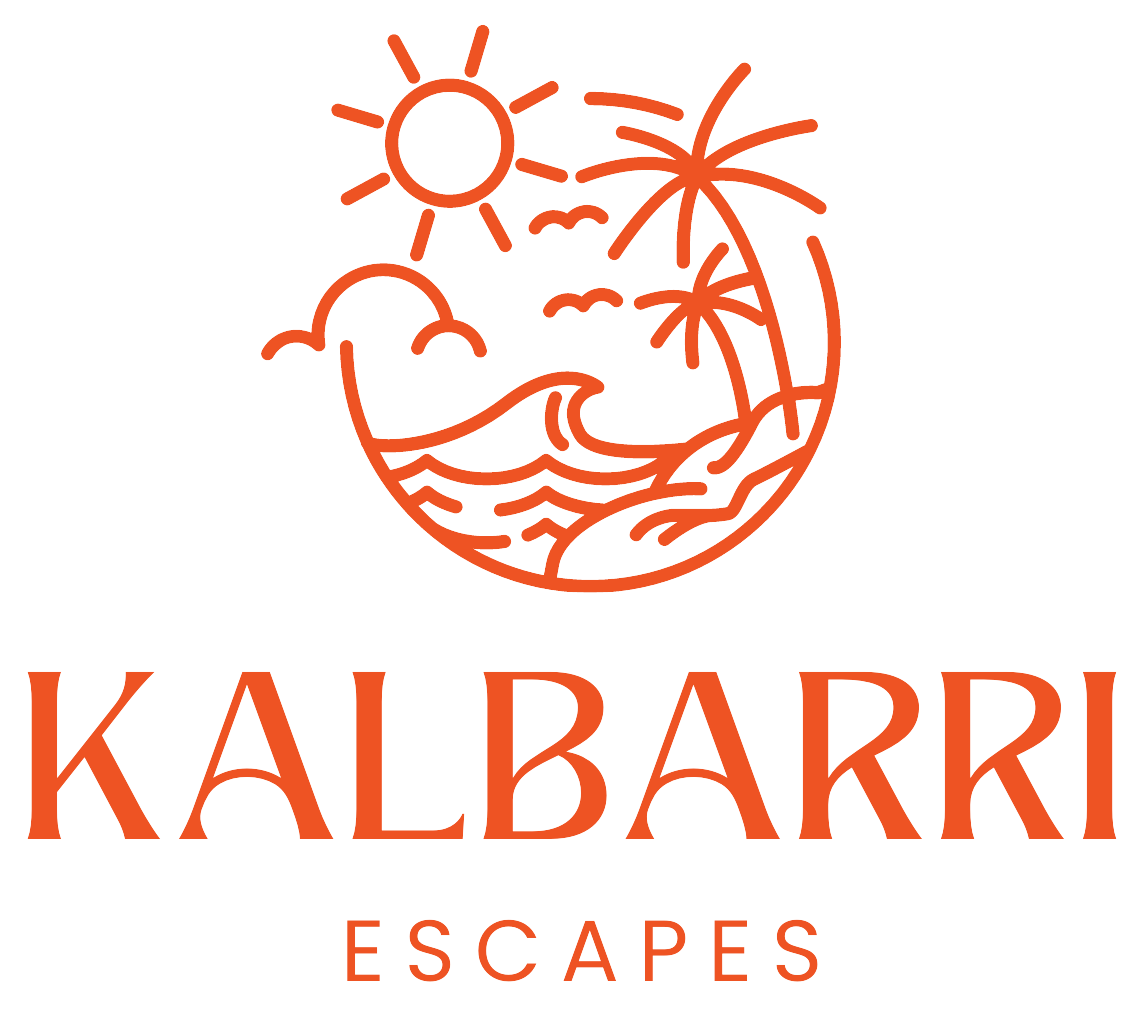Kalbarri Information
View or download the National Park map here!
Kalbarri National Park covers an area of 186,000 hectares, the rugged terrain and relative seclusion of the park attracts thousands of visitors each year. The experienced hiker to the simple holiday maker are catered for with access to 14 different sites throughout the area.
The township of Kalbarri is encircled by two distinctly different landscapes. North east of town are inland river gorges with rock formations as old as 400 million years, the south features towering ocean cliffs plummeting to the waves below.
The roads to the coastal sites are sealed and suitable for all vehicles, except for Pot Alley which is not suitable for caravans or motor homes as the road is far too steep. The roads into the inland gorge sites at Hawk's Head and Ross Graham are also sealed, and towing is allowed on these sites with large turn around bays and parking areas. There is interpretive signage along with shade shelters, toilets and picnic facilities scattered through the park. All the roads to the Z-Bend, Loop and Natures Window are fully sealed and accessible to all types of vehicles but no towing (caravans trailers boats etc) is allowed within this area. There is an unhitch bay just after the Kalbarri National Park Kiosk at the entrance of the park. Please remember there is no drinking water at any sites in the Kalbarri National Park so you must carry your own supply and if doing any longer hikes you will need 3 to 4 litres per person.
There are no campgrounds in the Kalbarri National Park and camping is not permitted however overnight hikes can be done in the park but permission has to be give by the Parks and Wildlife Rangers before undertaking any overnight hikes. There is a Parks and Wildlife Office 2 kms from the town centre on Clotworthy Street where you can register or phone them on 08 9964 0901.
Pets are not permitted inside the Kalbarri National Park, and it is not allowed to leave them inside vehicles in the park, travelling to and from the townsite is of course fine on the main roads.
UPDATE - COURTESY OF PARKS AND WILDLIFE
Jan 15th 2020

We're pleased to advise the Kalbarri Skywalk lookouts and connecting walkways have been successfully installed in Kalbarri National Park. Landscaping works including stone slab cutting and stonemasonry continue with some concrete paths being laid.
Infrastructure works are in progress as follows:
- The kiosk building has been constructed and the fit out is in progress
- Toilet and shade structures are under construction
- The Solar Power system tender has been awarded
- The Kalbarri Skywalk carpark construction is expected to commence in February
- Nanda artists have completed artwork designs and the artwork elements are currently being made.
Visitor interpretation:
- Designs for the interpretation of Nanda heritage have been completed and signage is yet to be manufactured, sign frames are being made and geological interpretation is being designed.
- Sculptures of local fauna are also being fabricated.
It is hoped that the Kalbarri Skywalks site will be open to the public in April 2020.
Z Bend has a remaining wallaby statue to be installed and Meanarra Hill has some remaining interpretive signs to be installed.

MEANARRA HILL LOOKOUT
Beautiful panoramic views over the town of Kalbarri, the mouth of the Murchison Riverand inland across the park can be appreciated from this elevated vantage point.
Meanarra Hill is located just 5km east of the town of Kalbarri. There is a car park with toilet facilities and a concrete walkway leading to lookouts and a shade shelter.
KALBARRI & BEYOND
HOUTMAN ABROLHOS ISLANDS NATIONAL PARK
Approximately 60km offshore from Kalbarri, the Houtman Abrolhos is a chain of 122 islands and associated coral reefs. It is the southern most true coral reef in the Indian Ocean and one of the highest altitude reef systems in the world.
It is one of the world's most important seabird breeding sites and is the centre of Western Australia's largest single species fishery - the Western Rock Lobster fishery. It has a small seasonal population of fishermen and a limited number of tourists are permitted for day trips, however most of the area is off limits as a conservation habitat. It is well known as the site of numerous shipwrecks, the most famous being the Batavia, wrecked in 1629 on Morning Reef this ended in a tragic mutiny.
Flights are available from Kalbarri to land on the island of East Wallabi, giving you the opportunity to swim & snorkel in the pristine waters.
WARRIBANNO CHIMNEY
Located off the main road on the northern entrance to Kalbarri, an unsealed road takes you to the site of the original lead smelter for Geraldine mine. One of the first to be built in WA and despite having laid dormant for over 150 years, the mine is still rich with history. The mine operated in the 1850's & 60's after Augustus Gregory discovered lead while exploring for pastoral development. It still retains solid stone work and foundations from it's working days.
Today these sites are adorned with wildflowers in season and a great spot to visit if you have time. 4 wheel drive is recommended only if continuing to the mine itself.
HORROCKS BEACH
Horrocks Beach is located on the coast 25 km west of Northampton or 85 km south of Kalbarri. The town site is a small coastal settlement used mainly for holiday and recreation. It is also home to the fishing families, which use the protected waters for a haven from the prevailing winds.
Horrocks offers a relaxing holiday for all the family with fishing and swimming topping the list of things to do. There is a general store, fuel station, fish and chip shop, public telephone and a fantastic foreshore, playground and jetty to keep the kids entertained.
NORTHAMPTON
Northampton a town of approximately 750 people is located 50km north of Geraldton. The surrounding wheat and pastoral farms use Northampton as a base. Visitors will find a rich history of both Aboriginal and European activity. Copper and lead were discovered in the district in 1849 and Northampton grew as a mining town supporting Geraldine Lead Mining Company, the first lead producer in Australia. Northampton has retained many of its original buildings and was declared an historic town in 1993.
The Heritage Railway Line, Gwala cemetery & church ruins, give visitors a real life history lesson, while the Botanic Line has a beautiful wildflower display in season. History buffs should not miss this small town gem.
PINK LAKE
It's official name of Hutt Lagoon was given by explorer George Grey who camped on its edge in 1839.
Hutt Lagoon is a salt lake with a pink hue due to the presence of the carotenoid producing algae, Dunaliella salina, which is a source of beta-carotene, used as a food-colouring agent and source of Vit A. in cosmetics and supplements. The lagoon contains the worlds largest microalgae production plant.
WHALE WATCHING
Whale watching season in Kalbarri runs from June to mid-November, when 40,000 humpback whales migrate between their summer breeding grounds and their winter feeding grounds. Kalbarri is a growing hub for whale watching, Kalbarri has accessible cliffs that overlook deep ocean floors and provide a unique vantage point.
Red Bluff is the closest coastal gorge to Kalbarri and has an easy walking track from the carpark to the two lookout points. Great photo opportunities of the coastal gorges facing South and also into the Kalbarri township facing North-West.
Grab a coffee from the Bean Drifting coffee van usually located at the car park on Red Bluff Road, sit back and relax taking in the views of Red Bluff, Indian Ocean, surfers at Jakes Point, whales and dolphins.
WHALE WATCHING TOURS
WILDFLOWERS
From July to October, more than 12,000 wildflower species carpet the Mid West region with their vivid and vibrant beauty, 60 per cent of which are found no where else on Earth. Some also are very hard to find so tread lightly and be prepared to walk a little to find the more rare and smaller species.
The climate does play a role in the abundance and variety that appear in the National Park every year. If we experience a particularly dry winter the flowers will be less and the rarer species harder to find, but one thing we can tell you is you will be amazed at what you will experience in the Kalbarri National Park.
Did you know that Western Australia has the largest variety of wildflowers in the world? With over 1100 species found in our National Park.
Beginning in late June, the dry sand plains and coastal and river gorges of Kalbarri National Park transform into a vivid display of colour. In the five months that follow, over 1,100 species of Western Australian wildflowers can burst into bloom across the Kalbarri region.






